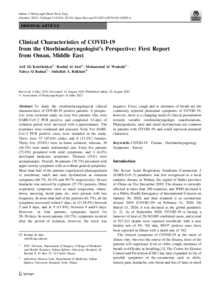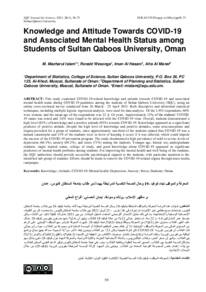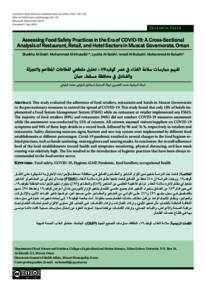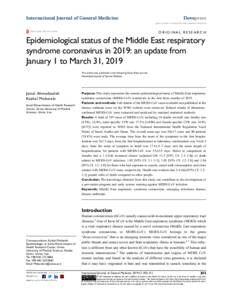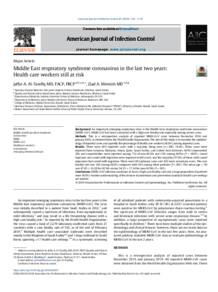Document
Clinical characteristics of COVID-19 from the otorhinolaryngologist’s perspective : first report from Oman, Middle East.
Identifier
DOI: 10.1007/s12070-021-02829-w
Source
Indian Journal of Otolaryngology and Head and Neck Surgery. v. 74, p. 3104-3110
Contributors
Al-Abri, Rashid., Author
Al-Washahi, Mohammed., Author
Al-Badaai, Yahya., Author
Balkhair, Abdullah A. , Author
Country
Germany.
City
Berlin
Publisher
Springer.
Gregorian
2022-10-01
Language
English
English abstract
To study the otorhinolaryngological clinical characteristics of COVID-19 positive patients. A prospective cross sectional study on sixty five patients who were SARS-CoV-2 PCR positive, and completed 14 days of isolation period were surveyed with a questionnaire. The responses were evaluated and assessed. Sixty five SARS-Cov-2 PCR positive cases were included in the study. There were 57 (87.6%) males and 8 (12.3%) females. Thirty five (53.8%) were in home isolation, whereas, 30 (46.2%) were under institutional care. Forty five patients (72.6%) presented with mild symptoms, and 4 (6.4%) developed moderate symptoms. Thirteen (21%) were asymptomatic. Overall, 46 patients (70.7%) presented with upper airway symptoms with or without general symptoms. More than half of the patients experienced pharyngodynia or sorethroat, smell and taste dysfunction as common symptoms (66.7%, 61.4% and 50.7% respectively). Severe headache was noticed by eighteen (27.7%) patients. Other respiratory symptoms such as nasal congestion, rhinorrhoea, sneezing, facial pain, etc. were present with less frequency. In more than half of the patients (61.5%), all the symptoms recovered within 5 days, in 12 (18.5%) between 5 and 8 days, and in 9 (13.8%), between 9 and14 days. However, in four patients, symptoms lasted for 28–30 days. In seven patients (10.7%), symptoms recurred after the period of isolation, however, the retest was negative. Fever, cough and or shortness of breath are the commonly reported prominent symptoms of COVID-19, however, there is a changing trend of clinical presentation towards variable otorhinolaryngologic manifestations. Pharyngodynia, taste and smell dysfunctions are common in patients with COVID-19, and could represent potential characters.
ISSN
2231-3796
Category
Journal articles

